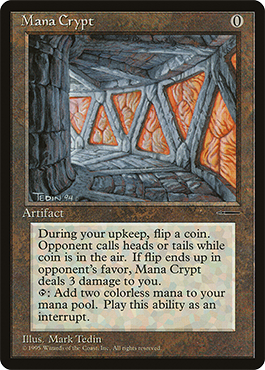Nizzahon looks at a significant event on this day in MTG history. On July 15th, 1994, Nalathni Dragon stirred up some controversy!
Hi everyone, and welcome back to another edition of “This Day in Magic History.” Most articles in this series look at fairly large events in Magic history, like the creation of a new format, the bannings of a card, the release of a set, or a particular Pro Tour. This week, we’re doing something a little different. We’re going to take a look at the release of one card in particular, and there’s a good chance that you’ve never even heard of this card! 28 years ago today, Nalathni Dragon was unleashed upon the world, and with it came one of Magic’s first major controversies.
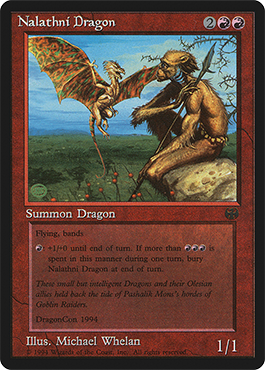
Why Was It Controversial?
Nalathni Dragon was Magic’s very first promo card. In fact, it was the first trading card game promo card ever! It was given out to DragonCon attendees in July of 1994. DragonCon is a comics, sci-fi, and games convention that is held every year in Atlanta, Georgia. Magic was only a little over a year old at this point, and the game had already become quite popular. This was the first time they had a significant presence at a major convention. The first 10,000 visitors who came to the Magic booth that year received a postcard that they could mail to Wizards of the Coast, and in exchange they would receive a copy of Nalathni Dragon.
While this was an ingenious idea to promote the game, this was not something that pleased many players. This is because Nalathni Dragon is a mechanically unique card. In other words, it was and is not a card that you can get from booster packs. The only way to get it was to attend this one event. This seemed unfair to many players and collectors, as it was just not possible for everyone to go to this event and receive the card. On top of that, many people went to the event to get the card with the intention of selling it on the secondary market.
The backlash against Nalathni Dragon resulted in Wizards of the Coast including the card in The Duelist #3. As I discussed in my article on Mark Rosewater’s first Magic writing, The Duelist was the game’s official magazine, published by Wizards of the Coast. This largely succeeded in placating angry fans, as it became much easier to pick up the card, which was now widely printed.
However, the controversy surrounding Nalathni Dragon caused Wizards of the Coast to drastically alter its course for the release and design of future promo cards.
Promo Cards in a Post-Nalathni Dragon World
The idea of promo cards stuck around, of course. However, going forward, they were not mechanically unique. At least…they weren’t for a while. Instead, they were reprints of cards that received a special foil treatment or featured alternate art. They were also usually quite easy to obtain, as many of them could be gained at your Local Game Store’s Friday Night Magic events.
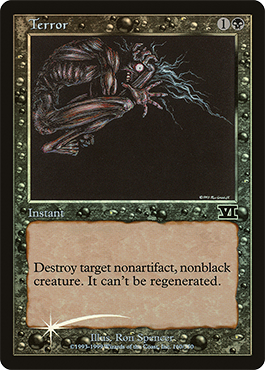
The main exception to this was the Magic promo cards that were available only by mailing in a voucher from the Magic novels that were published by HarperPrism. The most notable of these was Mana Crypt. Interestingly, there wasn’t nearly as much anger surrounding this promo card, because it was immediately widely available, as you could simply buy the book to get the voucher. There wasn’t a cap on the number of people who could get the card. Still, there were some people who weren’t thrilled with this. This was the only way people could get a Mana Crypt until 2016, when it was reprinted in Eternal Masters.
The HarperPrism promos are an exception that proves the rule: No other Magic promo cards were mechanically unique. However, that has actually changed in the relatively recent past. You’ve probably heard the cliched statement “History repeats itself.” Personally, I prefer Mark Twain’s take. He once wrote “History doesn’t repeat itself, but it does rhyme,” and this episode is some good evidence of that. Because, once again, it resulted in controversy.
The Return of Mechanically Unique Promo Cards
In 2018, with the release of Dominaria, Wizards of the Coast printed the first mechanically unique promo card since the HarperPrism promos. If you bought a booster box of Dominaria, you would receive a copy of Firesong and Sunspeaker. This marked the beginning of a new era, where buy-a-box promos would be mechanically unique. This initially resulted in significant controversy, but things cooled down once it became clear that Firesong and Sunspeaker weren’t going to be competitively viable Magic cards. Still, some sounded the alarm that some day there might be a buy-a-box promo that is a competitive staple, and the day that happened there would be a serious problem!
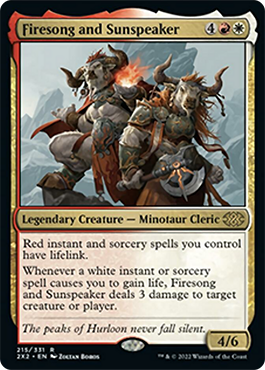
That day came all too soon. Later in 2018, the Core Set 2019 promo was Nexus of Fate. This card quickly proved to be quite powerful in ramp decks, which could constantly loop Nexus of Fate and take turns until they won the game. At its peak, Nexus of Fate was $50 – absurdly expensive. This also occurred with later buy-a-box promos like Throne of Eldraine’s Kenrith, the Returned King. Ultimately, many players were critical of the decision to print powerful cards as buy-a-box promos, as it became prohibitively expensive to obtain those cards due to the high demand for them. Mechanically unique buy-a-box promos continued until 2019’s Core Set 2020. Since then, buy-a-box promos have returned to being alternate art or foil treatments of cards that can be obtained in booster packs.
More recently, there has been controversy surrounding mechanically unique Secret Lair cards, such as those featuring characters from The Walking Dead and Stranger Things. This was ultimately resolved by Wizards of the Coast promising to print in-universe versions of these cards in the future. So, while these cards were initially mechanically unique, they wouldn’t be in the long run.
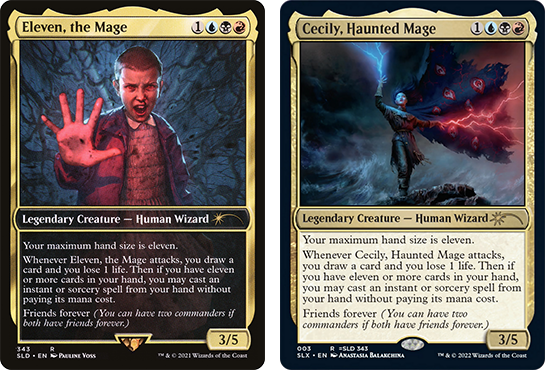
Parting Words
The printing of Nalathni Dragon caused a major controversy, one that Wizards of the Coast had to respond to by making the card more readily available. The lessons learned from this controversy led to a major shift in what we would see in promo cards. There was a brief return to mechanically unique promo cards in 2018 and 2019, but once again criticism led to this being discontinued. It is hard to imagine we’ll see a return to mechanically unique promo cards, although maybe they will take another crack at it in twenty years or so!
Thanks for reading. I’ll be back next week to discuss another important event in Magic history!

Jacob has been playing Magic for the better part of 24 years, and he especially loves playing Magic’s Limited formats. He also holds a PhD in history from the University of Oklahoma. In 2015, he started his YouTube channel, “Nizzahon Magic,” where he combines his interests with many videos covering Magic’s competitive history. When he’s not playing Magic or making Magic content, he can be found teaching college-level history courses or caring for a menagerie of pets with his wife.


